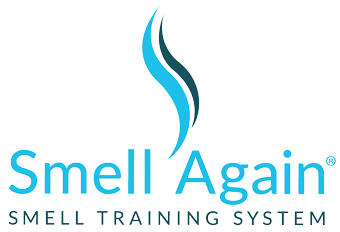The prevalence of olfactory loss is estimated to be approximately 15% though many cases still go undiagnosed. Upper respiratory tract infections (URTI) and traumatic injuries to the head and face are the most reported cases of olfactory loss. The negative impact of these conditions on the quality of life of those affected has lead to research on treatment options aimed at restoring olfactory function. Such include use of repeated exposure to odors1.
This study2 aimed at evaluating the effect of repeated exposure of odors on patients with anosmia resulting from post URTI and craniofacial injuries at a smell and taste clinic.
Sense of smell was determined using the Sniffin’ Stick battery test. This is quantitative test used to assess the sense of smell. Odor identification, discrimination and threshold (TDI) scores were calculated.
Olfactory training was done for 16 weeks where patients were exposed to flowery, fruity, aromatic and resinous odors. This was done twice daily (morning and evening) for 5 minutes with each rotation of exposure lasting 10 seconds at intervals of 10 seconds between each odor. Past published literature indicates extended periods of exposure (over 16 weeks) do not show any additional benefits or improvement in sense of smell1.
Results
At the end of the study period both training patients and control groups showed marked improvement in their sense of smell. The post-URTI training group had the highest percentage of improved patients followed by its control group and the post-traumatic group respectively. The post-traumatic control group posted the least number of people with improvement. The post-URTI training group also had the most improved TDI scores compared to its control group during follow up sessions. The post-traumatic group, however, posted improvement only after the second follow-up session. Published literature indicates evidence of regeneration of the olfactory cells in the nose and brain changes in areas that control olfaction, e.g. the olfactory bulb, with repeated exposure to a variety of odors3.
All participants had positive rating of the treatment. The post-URTI group rated improvement after every follow-up session and the post-traumatic training group only during the last assessment. Patients are usually more likely to continue/comply with a form of treatment if its benefits are evident during the early stages. especially if treatment is performed for a long period of time.
There was no significant association between gender and age with olfactory function improvement in all groups.
The odds of regaining sense of smell were three times higher in both the training and control group of post-URTI patients who had a shorter duration of URTIs as compared to those who had suffered chronic cases of URTIs. However, there was no association between duration of olfactory loss and improved olfaction in the post-traumatic subgroups. Post-traumatic patients with severe injuries, i.e. hospitalized with ICU or those with brain damage showed little improved olfaction. Therefore duration and severity of trauma can be used as prognostic indicators during assessment and smell training.
In conclusion, it is safe to say that smell training is an effective way of restoring olfaction.
Patients with post-URTIs are more likely to recover their sense of smell faster than those with post-traumatic brain injuries.
It’s also good to note that severity of traumatic injuries and duration of illness can be used as predictors of recovery.
References
1. Hummel T, Rissom K, Reden J, Haehner A, Weidenbecher M, Hüttenbrink K-B. Effects of Olfactory Training in Patients with Olfactory Loss. The Laryngoscope. 2009. 496-499 p.
2. Konstantinidis I, Tsakiropoulou E, Bekiaridou P. Use of Olfactory Training in Post-Traumatic and Postinfectious Olfactory Dysfunction. 2013;(December):85–90.
3. Wang L, Chen L, Jacob T. Evidence for peripheral plasticity in human odour response. 2003;(1993):236–44.
